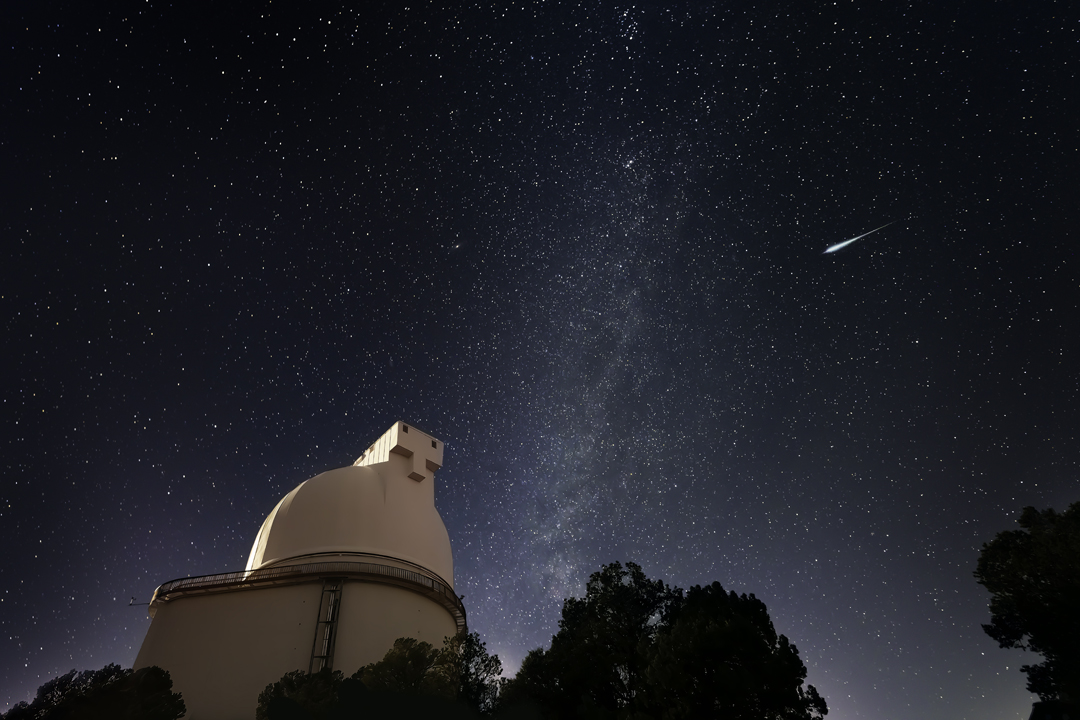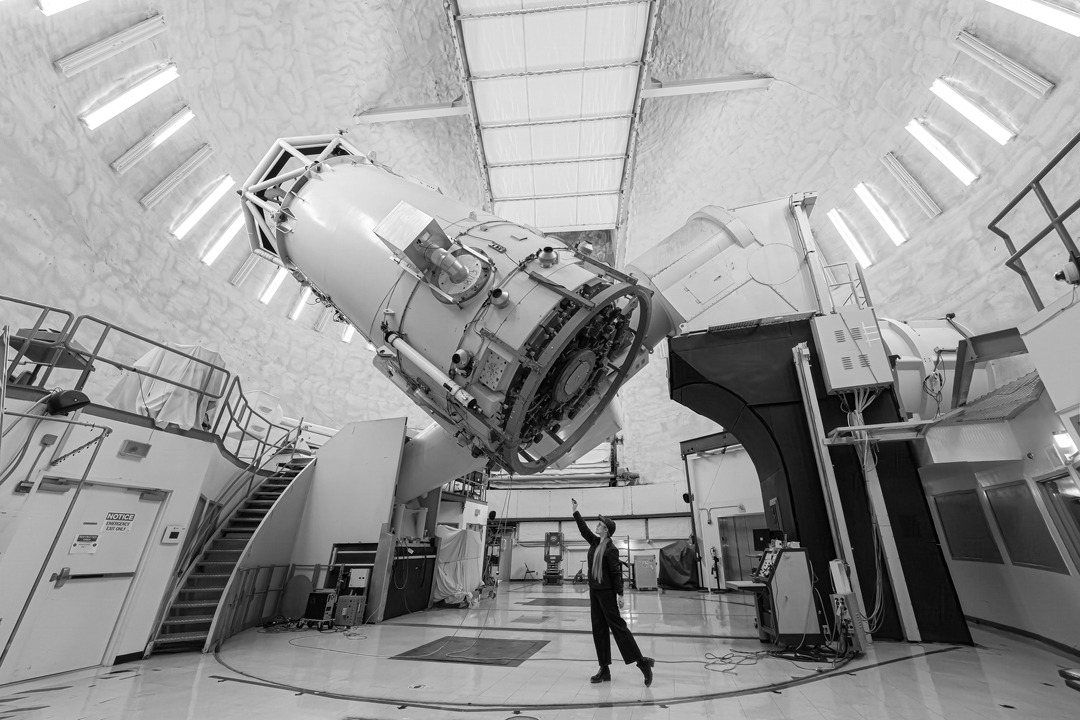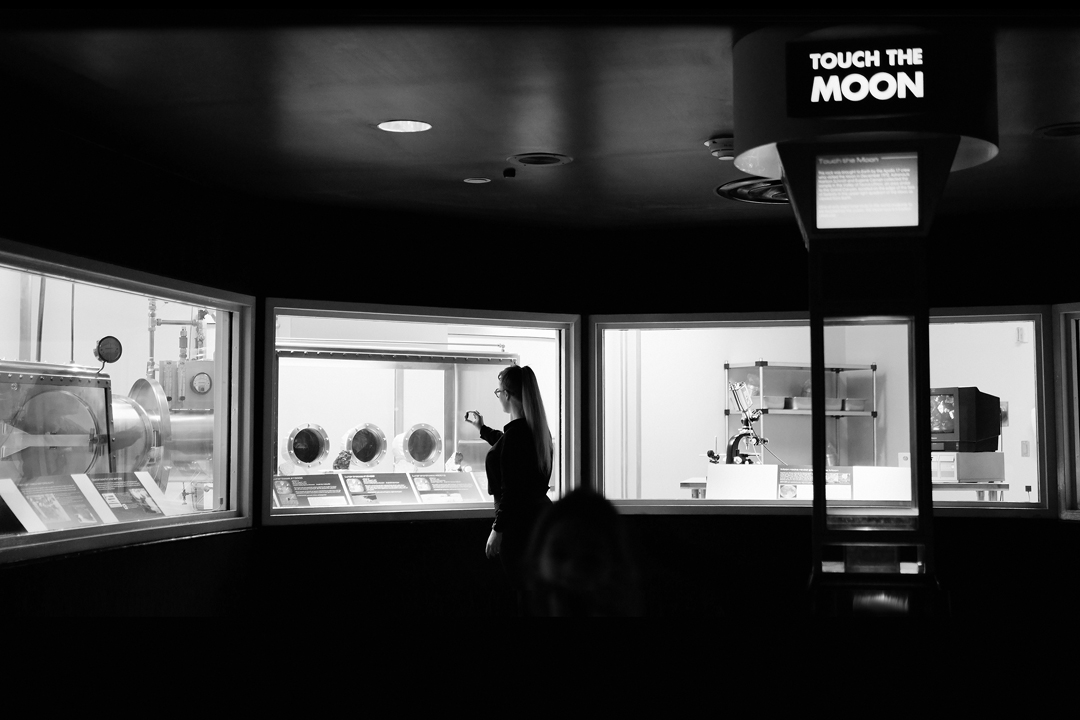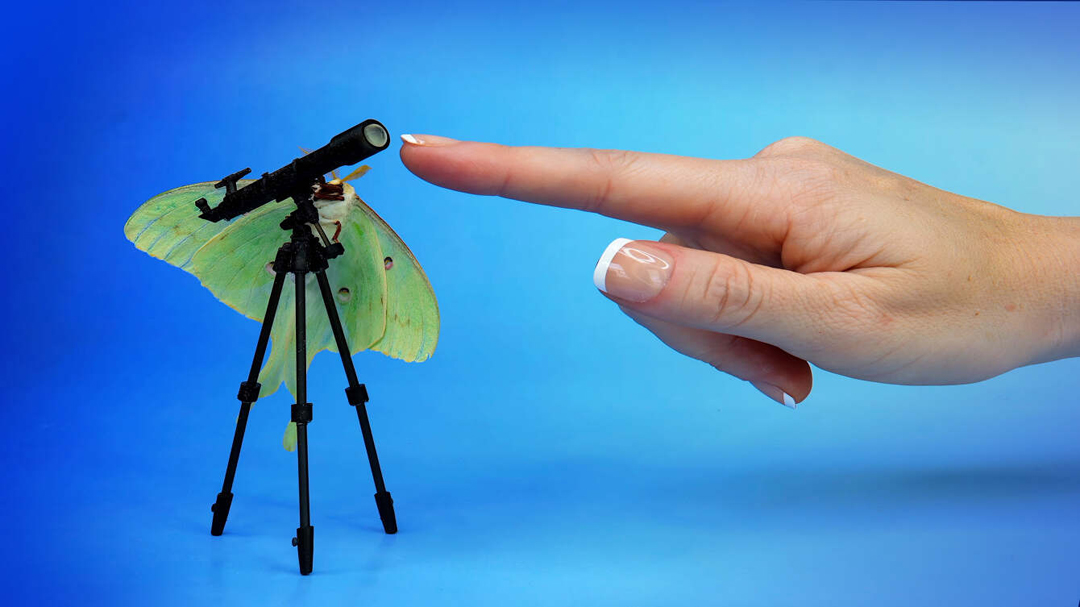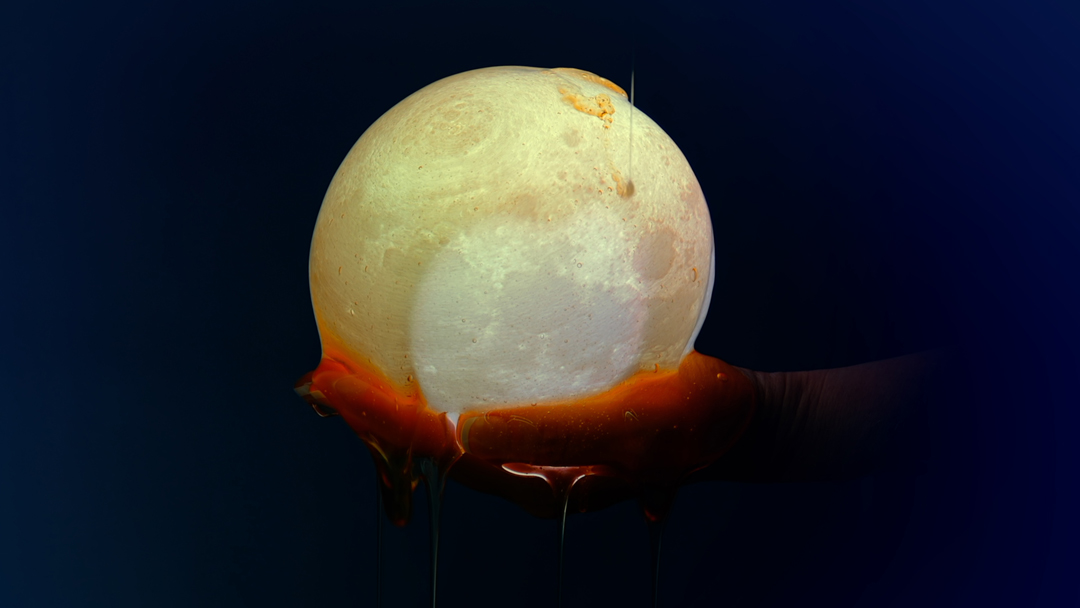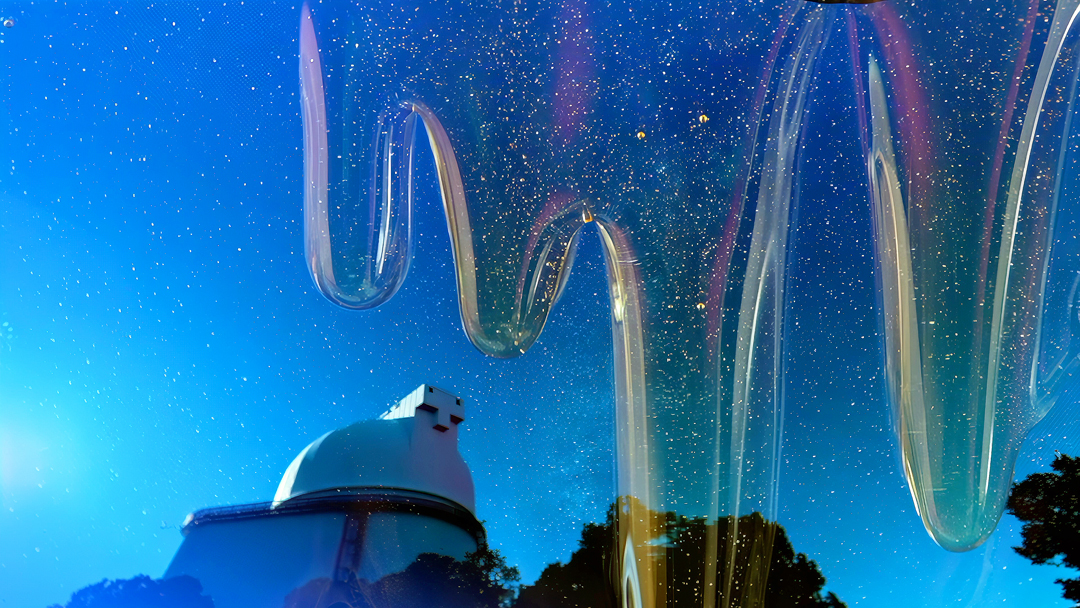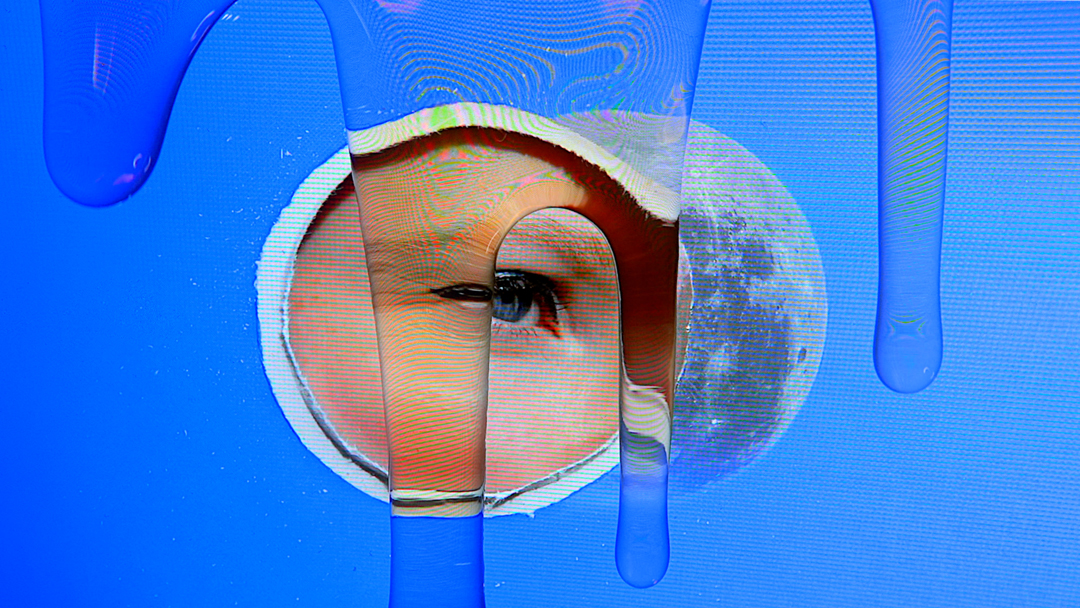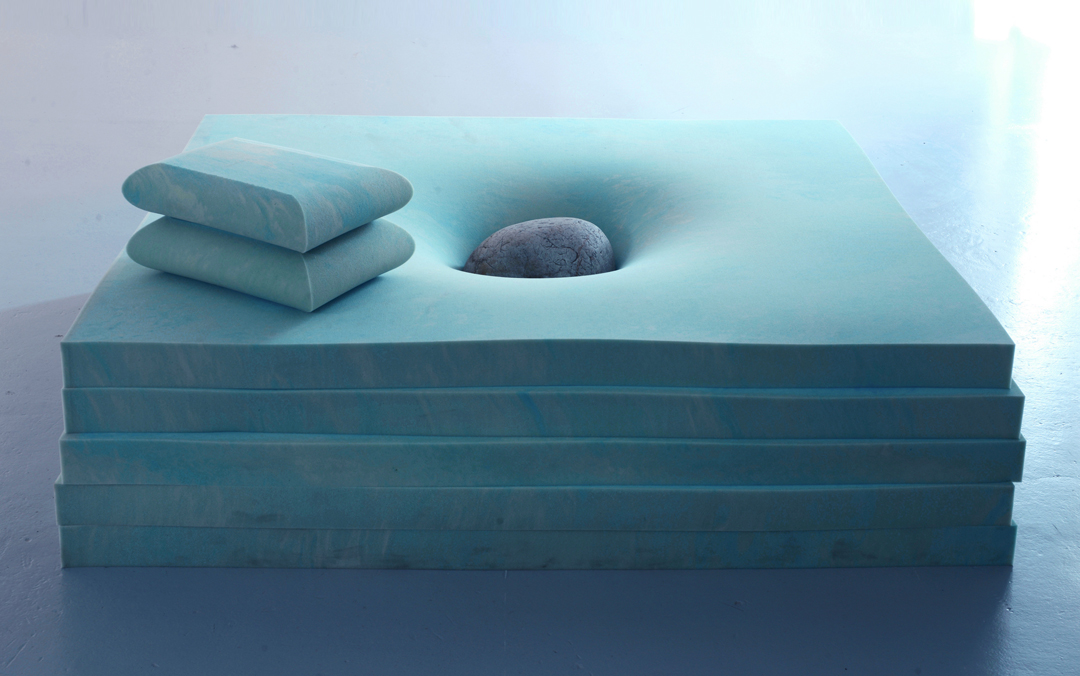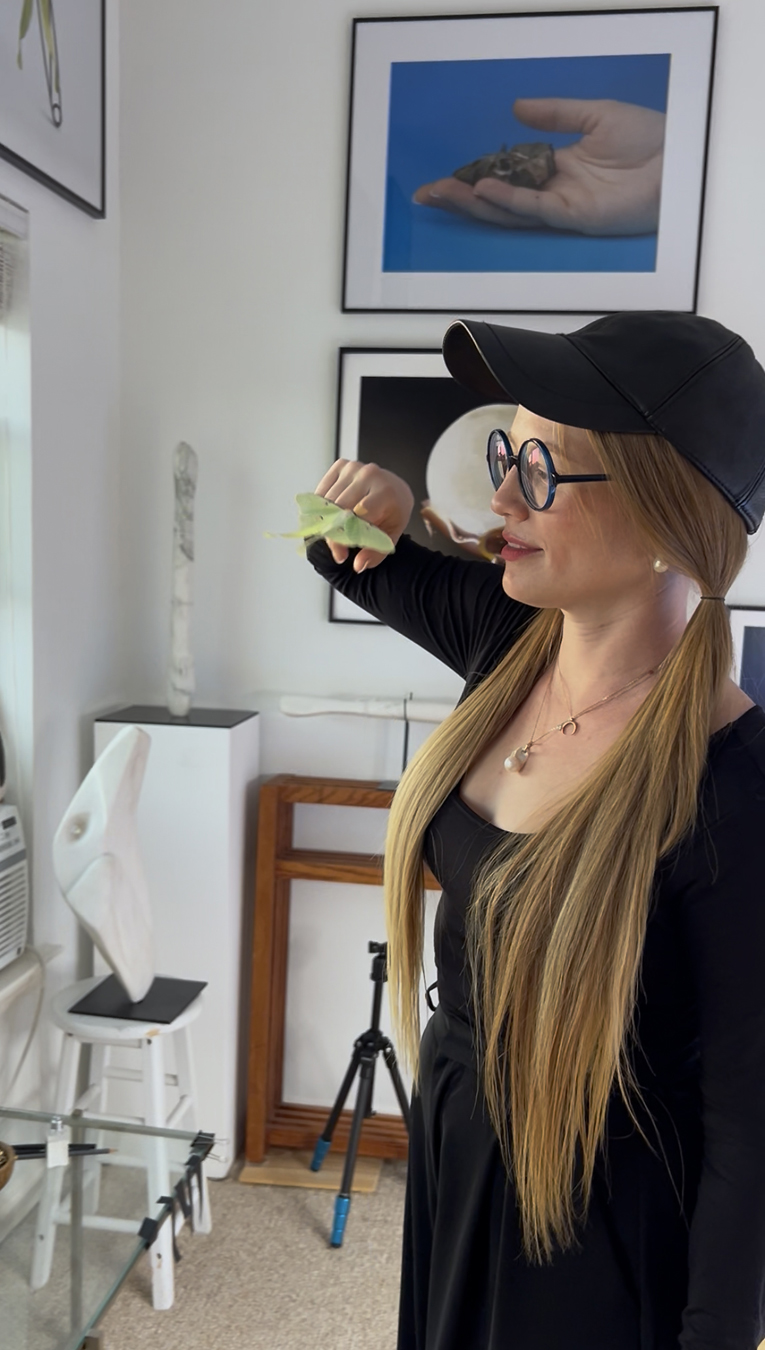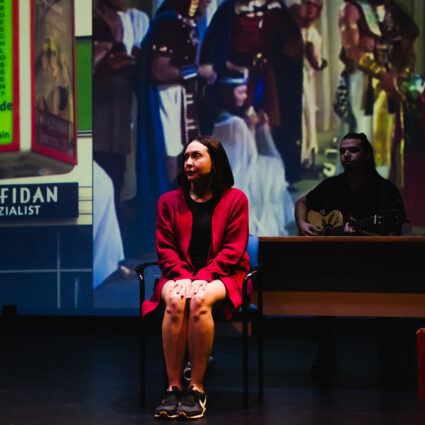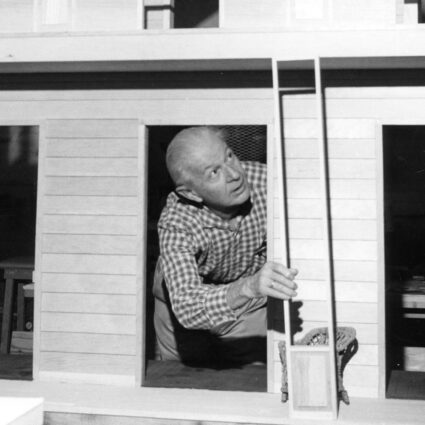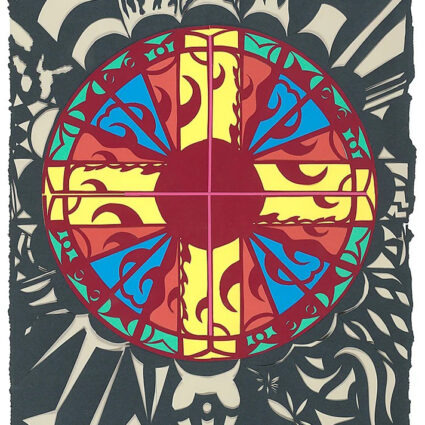Sculptor-photographer Virginia L. Montgomery is based in Austin but her work lives on a different plane, somewhere between science and dreams.

When I meet Virginia L. Montgomery (or “VLM” as she is more frequently called) in her home studio in Austin, Texas, the first thing that I notice are her saucer-sized black glasses, which magnify her eyes and eclipse her form. She has her light blonde hair tied back and wears a series of vaguely celestial necklaces, a tank top, and flowing striped pants. Her smile and body language are welcoming, but her eyes tend to dreamily drift just off from my face when she talks.
I first spotted VLM’s work at the Friends Fair held at the Loren Hotel on Austin’s Lady Bird Lake, where a collection of galleries took over two floors of rooms and filled them with avante-garde creations. Among Portlandia-style images of steampunk pigs and bulbous blinking light sculptures floating in commercial bathtubs, what caught my eye was a collection of powerful but demure pieces: a photograph of a luna moth, a stone sunk into a palette of foam placed on a bed, and a moving timelapse video featuring honey—all in a quiet hotel room curated by Ivester Contemporary.
After reaching out to an amiable Kevin Ivester at Ivester Contemporary, he connected me to an equally amiable and enthusiastic VLM, who prior to our meeting sent me a list of links for her latest video installations: Elemental Currents (2025), Astrophotography Timelapses (2024), and Moon Moth Bed (2023), which highlight the robustness of her oeuvre as well as the evolution of her experimentations with photography, sculpture, entomology, and neo-surrealism over the past several years.
Growing up in Houston, NASA was an omnipresent cultural force and science was always present within my life.
Elemental Currents is an immersive installation that debuted at Ballroom Marfa, a restored 1920s ballroom that highlights freedom in contemporary artistic expression in deep West Texas. The sounds in the piece evoke ASMR, lulling the viewer into a quiet, peaceful state of happiness and transporting them into a realm in which alternative beings like moths and stars take precedence over human centricism.
Astrophotography Timelapses premiered last December when VLM was an artist in residence at the McDonald Observatory in Fort Davis, Texas, working with a team of astrophysicists. In it, VLM places the viewer into opposition with the immensity of the universe, which changes with every beating moment—or with each click of VLM’s camera. Honey drizzles across celestial scenescapes, manipulating shapes and colors. Meanwhile, a mixture of bells, thunderstorms, and synth undertones periodically tinkles and rumbles, giving the impression that the viewer might be the dog in a Pavlovian experiment.
Moon Moth Bed is a piece created for the solo exhibition Eye Moon Cocoon at Women and Their Work Gallery in Austin, Texas. In it, VLM mimics a dream state by playfully distorting the viewer’s sense of perception by combining video with photographic stills. The work in the piece is done practically (with no CGI or graphics). Its combination of materials is both light and surprising; guest stars include a French-manicured hand, a curious blue eye, crinkled and fuzzy moths unfurling into vibrant green sprites, and power drills.
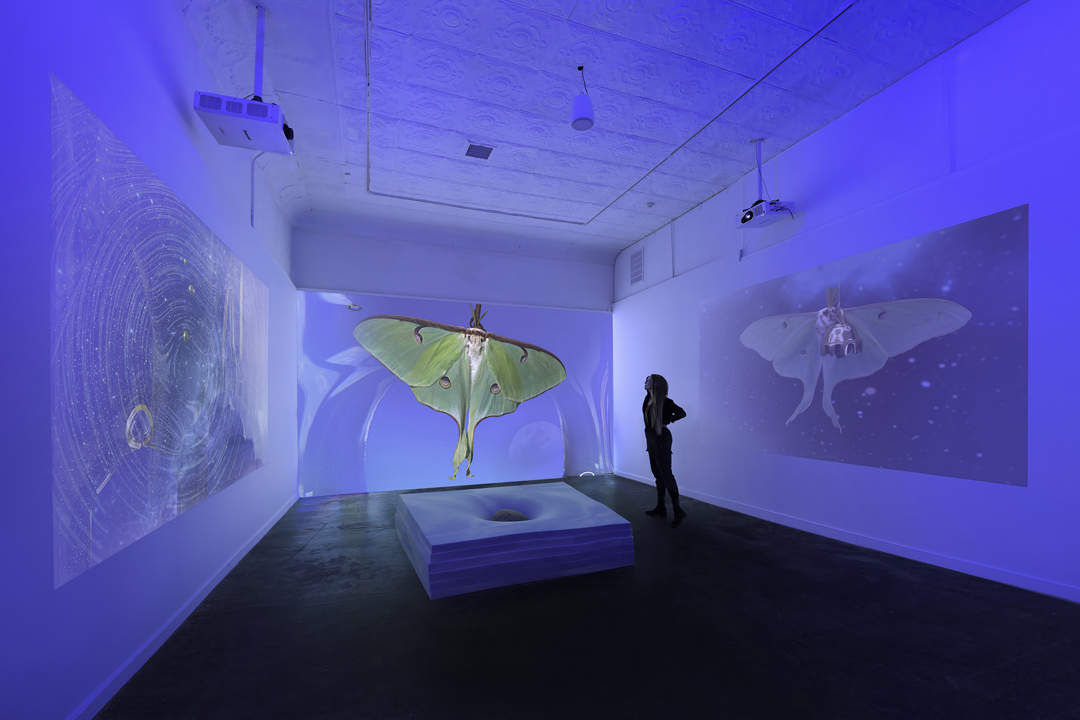
With knowledge of VLM’s repertoire under my belt, I was ready to meet her. I prepared myself emotionally for seeing her studio, knowing that it could look like anything. Were these dreamy videos emanating from the interior of a rocket ship designed by Miuccia Prada? Or perhaps a high-desert oasis littered with the discarded cocoons of moths à la Hannibal Lecter? Dear reader, have no fear for my personal safety, because I am happy to report that Virginia L. Montgomery’s studio is a bright and clean loft complete with a lush wall of silver pothos, cameras and ring lights, and a salon-style arrangement of her favorite photos from her own pieces as well as portraits of VLM from her arts fellowships.
After a few questions about her process and interests, VLM shows me one of her prized possessions—a glass-encased collection of preserved moths and butterflies. She tells me how her upbringing and her family shaped her scientifically curious approach to art: “Growing up in Houston, NASA was an omnipresent cultural force and science was always present within my life. Because I had both an uncle in the space program and a grandfather who was a food scientist, the research virtues of science, like cultivating curiosity, looking for patterns, and [paying] attention to small details were role-modeled before me.” VLM once brought her luna moth cocoons to NASA’s headquarters, just one example of how she folds her art practice into the scientific world that helped inspire it.
In the studio, I embrace a panpsychic perspective, seeing the objects around me… as collaborators.
Although I feel that I am having a perfectly fine time understanding VLM, I can tell that she is cognizant of herself not always being understood. Her neurodivergence—which she defines as “on the autism spectrum with hearing-motion synesthesia”—is a driver for her work. What otherwise might be an elephant in the room has been reengineered into a communications superpower: “I believe [that] the autistic mindset holds immense creative potential, and I strive to celebrate that in my practice. I create artworks that hopefully resonate with others in the neurodivergent community. My goal is to make space for my autistic perspective to fluidly merge the inner dream world, the structures of language, and the material world—allowing all of these realms to interweave and inform one another.”
Near the end of our conversation, we find ourselves debating the preferences of stone and whether or not it wants to be turned into monuments to dead presidents or would prefer to rest peacefully on memory foam. (As is evidenced in her work, VLM believes emphatically in the rights of stone to rest peacefully on memory foam.) This illustrates the particular way in which her work is inspired by a branch of metaphysics called panpsychism, which she defines as “the radical notion that consciousness is not exclusive to humans or animals but is a fundamental force permeating all matter, much like gravity. In the studio, I embrace a panpsychic perspective, seeing the objects around me… as collaborators.”
She smiles and I smile, and I find that I agree. Living in VLM’s world is a much more pleasant reality than the neurotypical one that we are trained to receive: If I were a stone, I would very much prefer to spend my days resting on memory foam, and if I were a luna moth I suppose I would very much like to see the moon.
